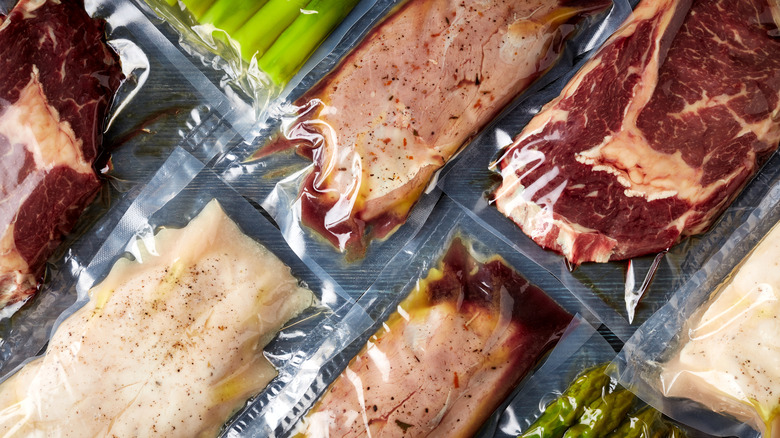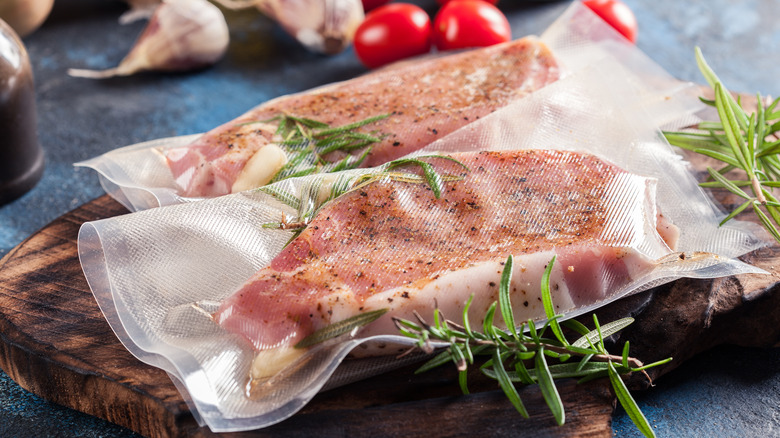Why Time Actually Matters In Sous Vide Cooking
We may receive a commission on purchases made from links.
Whether you're a home cook or a dining aficionado, you're likely familiar today with sous vide cooking — a technique that takes meat, poultry, fish, and even fruits and vegetables; places them into vacuum-sealed bags; and then cooks them in a very low-temperature bath of constantly circulating water. Modernist Cuisine explains sous vide cooking allows for precision cooking — via target temperatures — offering cooks a certain level of control and predictability over the cooking process.
Once almost entirely limited to the domain of professional kitchens, immersion circulators (as the gadget that heats and circulates the water in a pot or container are known as) have become more affordable over the years and are now available to home cooks everywhere (via Anova Culinary). According to Sous-Vide Magazine, the first household sous vide cooking appliance was introduced in 2009.
If you're looking to tackle sous vide cooking at home — or already do so regularly — then you'll want to keep some common sous vide mistakes in mind, from not fully submerging your sealed bags of food to using the wrong water temperature. Another error you'll want to avoid? Assuming that how long an item cooks is more or less irrelevant.
Different foods definitely require different cook times
One advantage of sous vide cooking is that outcomes are very consistent once you get the hang of the non-traditional cooking method. An immersion circulator lets cooks set their target temperature and simply trust in the precision of the gadget to ensure their piece of food is cooked to that temperature, and that specific temperature alone.
With sous vide cooking, you rely on the concrete factor of the water's temperature. As Dine Company explains, the internal temperature of your food (e.g., eggs) will never go over the temperature you set because the water bath in which your food is immersed remains at that temperature — consistently.
Nevertheless, cook time is a factor that still matters when sous vide-ing. As noted by Chelsea Cole, author of "Everyday Sous Vide," while sous-vide foods can't ever really overcook, thanks to the immersion circulator — as she told Tasting Table, "You can [sous vide] cook a steak for 1-4 hours, and no matter when you pull it out in that time frame, it's going to be fantastic" — she also says the texture of your food will change eventually the longer you cook it, even when sous vide cooking.
Which is why she says it's good to settle on what ingredient you want to prepare and what you'd like its texture to be before you get cooking with sous vide. "If I want a super meaty, juicy steak, I'm going to cook it for as short a time as possible," Cole said. "If I want a shreddy, fall-apart pork shoulder, I'm going to cook it for about 24 hours."

